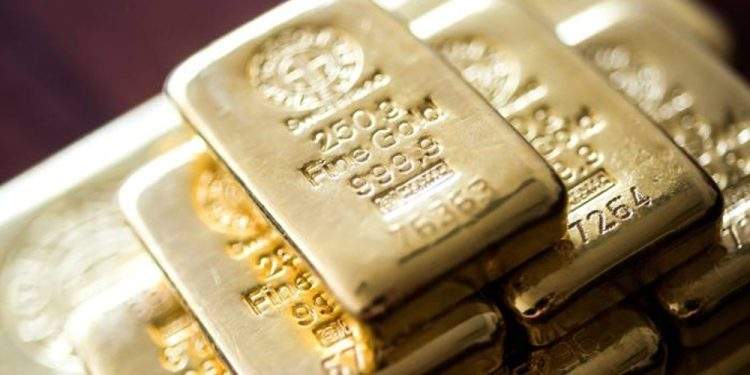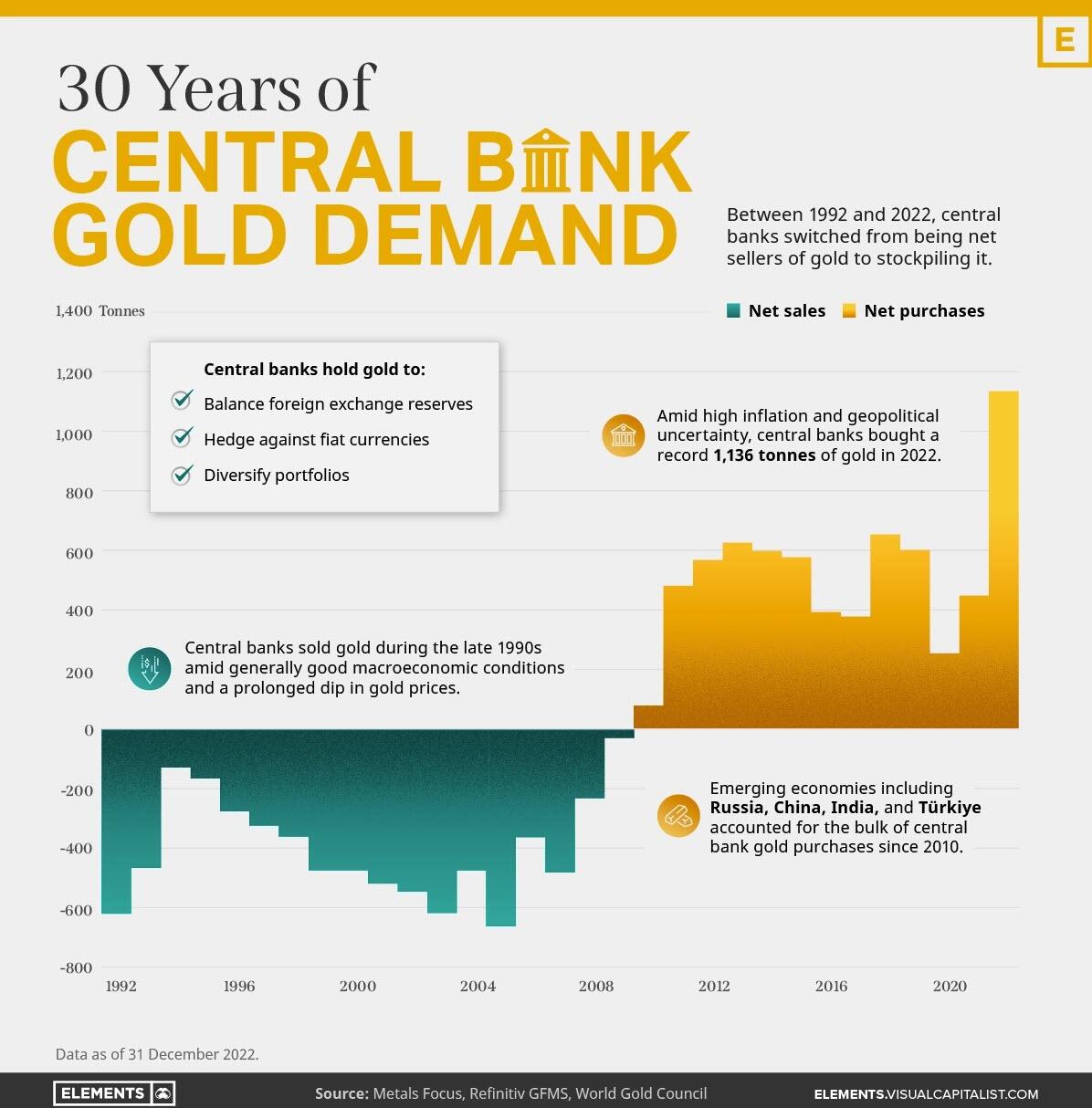- Watch The JD Rucker Show every day to be truly informed.
As I’ve been warning about since last year, central banks across the globe — but particularly in Russia, China, India, and Turkey — have been buying up more gold than they ever have.
This is bad news because it means they’re expecting (or perhaps even manufacturing) an economic downturn far worse than what we’ve already seen. Precious metals are long-term holds which goes against the central banks’ penchant for flexibility in moving money across markets. For them to be buying gold the way they have been since last year means they’re not expecting the “soft landing” we keep getting lied to about by Janet Yellen and her ilk.
Here’s a chart by Visual Capitalists that clearly shows the shocking trend:
According to Zero Hedge:
Did you know that nearly one-fifth of all the gold ever mined is held by central banks?
As Visual Capitalist’s Govind Bhutada details below, besides investors and jewelry consumers, central banks are a major source of gold demand. In fact, in 2022, central banks snapped up gold at the fastest pace since 1967.
However, the record gold purchases of 2022 are in stark contrast to the 1990s and early 2000s, when central banks were net sellers of gold.
The above infographic uses data from the World Gold Council to show 30 years of central bank gold demand, highlighting how official attitudes toward gold have changed in the last 30 years.
With central banks continuing to buy gold, not to mention the emerging banking crisis, many Americans are moving wealth or retirement to precious metals. Here’s a brief explainer about why and how it’s done.

It’s becoming increasingly clear that fiat currencies across the globe, including the U.S. Dollar, are under attack. Paper money is losing its value, translating into insane inflation and less value in our life’s savings.
Genesis Gold Group believes physical precious metals are an amazing option for those seeking to move their wealth or retirement to higher ground. Whether Central Bank Digital Currencies replace current fiat currencies or not, precious metals are poised to retain or even increase in value. This is why central banks and mega-asset managers like BlackRock are moving much of their holdings to precious metals.
As a Christian company, Genesis Gold Group has maintained a perfect 5 out of 5 rating with the Better Business Bureau. Their faith-driven values allow them to help Americans protect their life’s savings without the gimmicks used by most precious metals companies. Reach out to them today to see how they can streamline the rollover or transfer of your current and previous retirement accounts.









